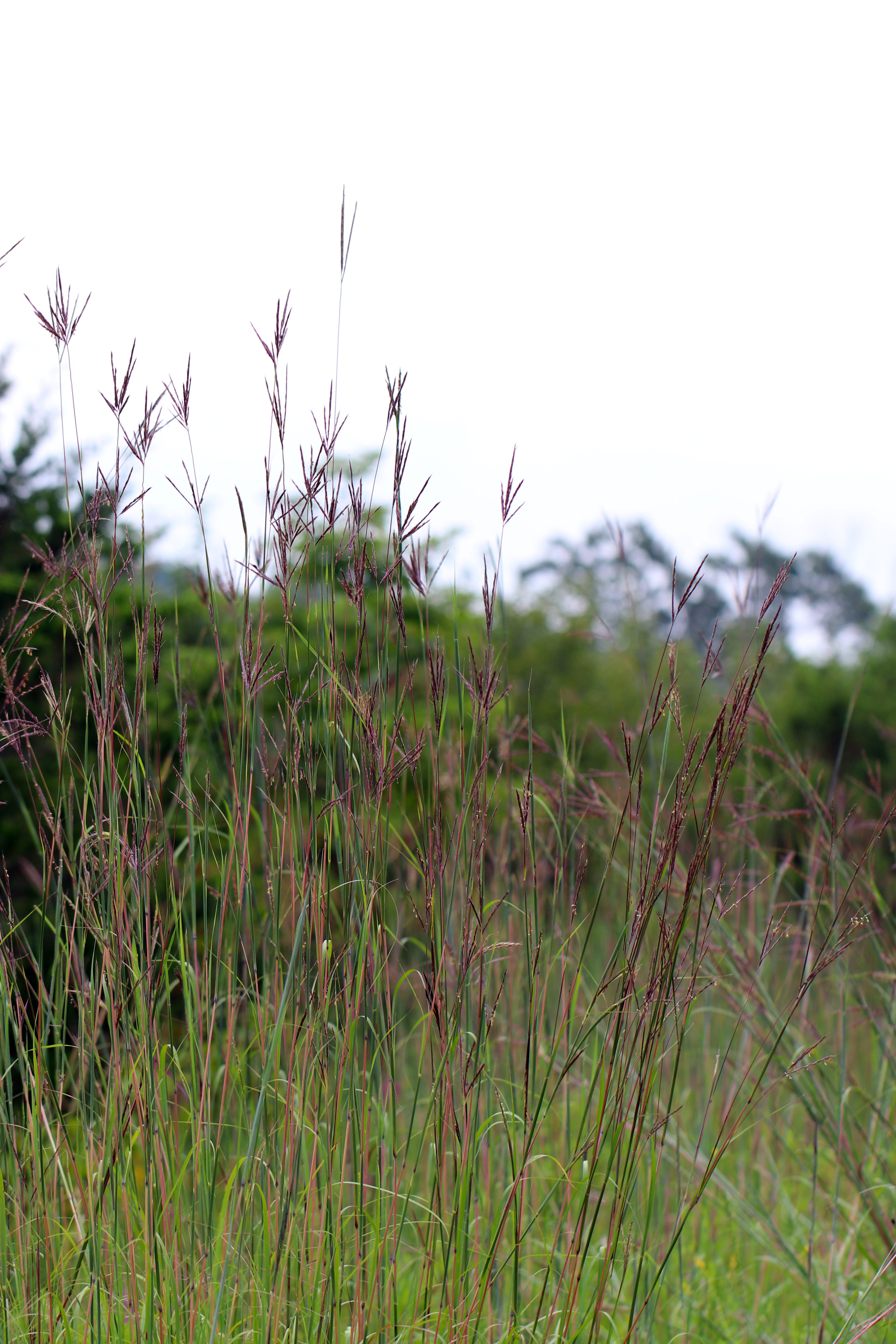Big bluestem
(Andropogon gerardii)

Description
Andropogon gerardi, commonly known as big bluestem, is a species of tall grass native to much of the Great Plains and grassland regions of central and eastern North America. It is also known as tall bluestem,bluejoint, and turkeyfoot. Big bluestem is a perennial warm-season bunchgrass. It is tolerant of a wide range of soil conditions. The main roots are 6–10 ft (1.8–3.0 m) deep, and the plants send out strong, tough rhizomes, so it forms very strong sod. Depending on soil and moisture conditions, it grows to a height of 1–3 m (3.3–9.8 ft). The stem base turns blue or purple as it matures. Big bluestem blooms in the summer and seeds into the fall. The inflorescence (cluster of flowers) is a raceme of two to six, most commonly three, narrow spike-like racemes alternately arranged along the top of the stem. It somewhat resembles a wild turkey's foot.Each raceme contains pairs of spikelets. Each pair has a stalked spikelet with another stalkless spikelet at the base of the stalk. The stalkless spikelet usually has a fertile, perfect floret (with both female and male parts) and an awn (bristle), and the stalked spikelet is awnless, and is sterile or has a staminate (male) flower. Big bluestem is a midsuccessional grass in prairie and other grassland ecosystems. It grows in tall, dense stands that can outcompete other plant species. The stands grow until disturbance interrupts their spread. It is shade intolerant and is adapted to fire. It is a host to larvae of several species of butterflies, including the arogos skipper, byssus skipper, cobweb skipper, common wood nymph, Delaware skipper, and dusted skipper. The larvae of the leaf beetle Diabrotica cristata feed on the roots and the adults visit the flowers of other species of prairie flowers. Many ants decorate their nests with the seeds, including Formica glacialis, F. montana, and F. subsericea.Several species of ants, such as F. glacialis, F. montana, F. subsericea, Lasius minutus, and L. umbratus build nests around the base of this bunchgrass, forming large soil mounds. In larger mounds, the nest is shared by multiple species of ants, and is "likened to an apartment complex with each ant species in its own nest partition". Up to 12 species of ants have been recorded in mounds found in the Chicago region. The rust fungus Puccinia andropogonis forms black telia on the leaves
Taxonomic tree:







